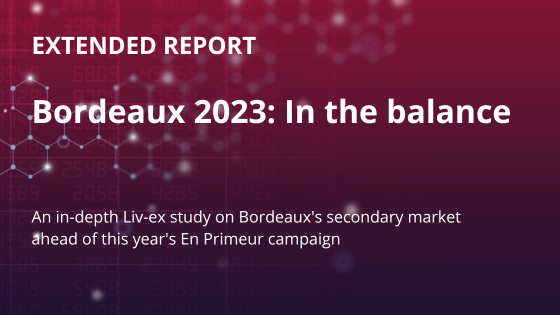In February 2011 the fine wine market was approaching its peak. Prices – especially for the illustrious Bordeaux First Growths – were at a premium. Three years later, we have taken a look at where prices for these wines have gone, and how their relationship to each other has changed.
The chart above compares the average prices of the First Growth 1994-2009 vintages (Haut Brion, Lafite, Latour, Margaux and Mouton) as they were in February 2011 and as they were last month. Prices vary drastically. While the shape of this variation has changed little in three years, two things are evident. First, the prices of recent vintages have fallen: the trend line in 2011 shows a premium for newer vintages but in 2014 this premium has flattened. Second, the gap between the most and least expensive vintages has narrowed.
We decided to break down the wines into ‘on’-vintage (i.e. exceptional years) and ‘off’-vintage (average or poor years). Of the on-vintages (below) nearly all have fallen by 35% or more; the exception is the 2000 – helped in no small part by the extraordinary performance of Mouton 2000 – whose average remains the most expensive. In general, the on-vintages have been hit hard, but their prices in relation to each other have stayed much the same.
On average, off-vintages (below) have fallen 28% in three years compared to a 35% fall for on-vintages. The greatest drop has been for the 2008, whose prices flew, as Robert Parker suggested in his tasting note for Lafite 2008, as a result of 'the significance of the number 8 in the Chinese culture'. A 56% drop has taken its price down to meet those of the other off-vintages, and dips elsewhere have brought prices to a level. This takes average off-vintage prices to around £3,500 a case.
What all this shows is that newer vintages have been hardest hit by the market’s downturn, and those from exceptional years more so. But with prices now flattening out across the 1994-2009 vintages, a more curious fact emerges: currently, it would seem that time in bottle adds nothing to a wine’s value. This makes little sense. As fundamentals re-assert themselves, older vintages seem likely to outperform as supply is depleted.








